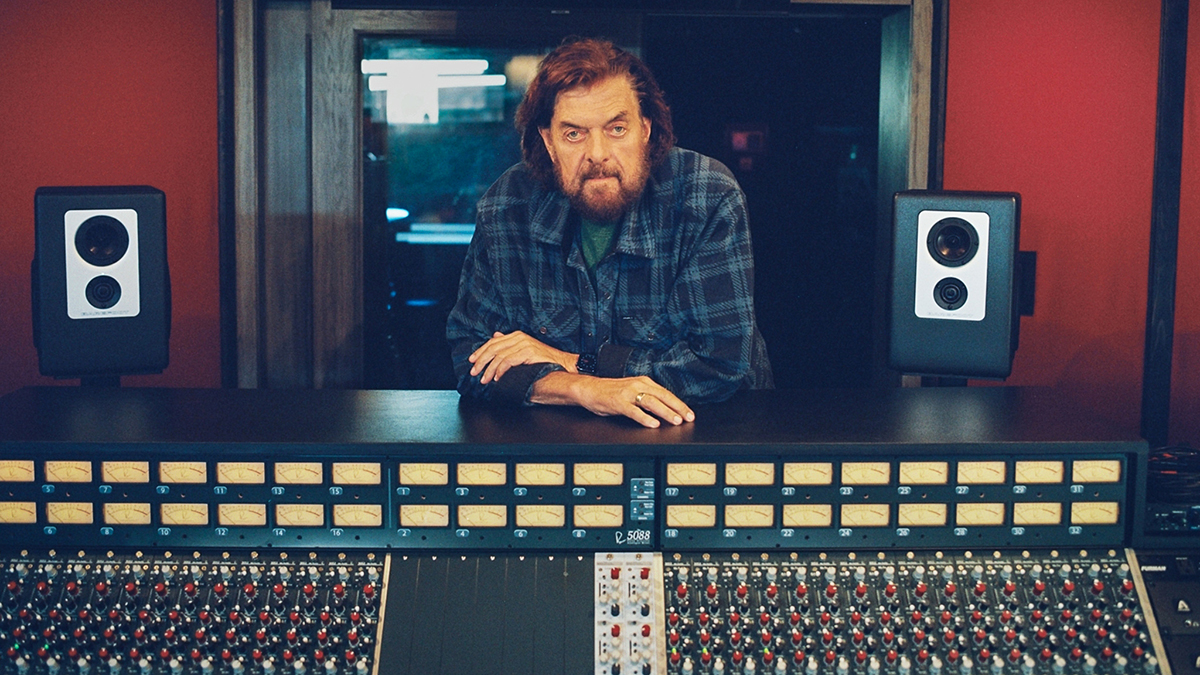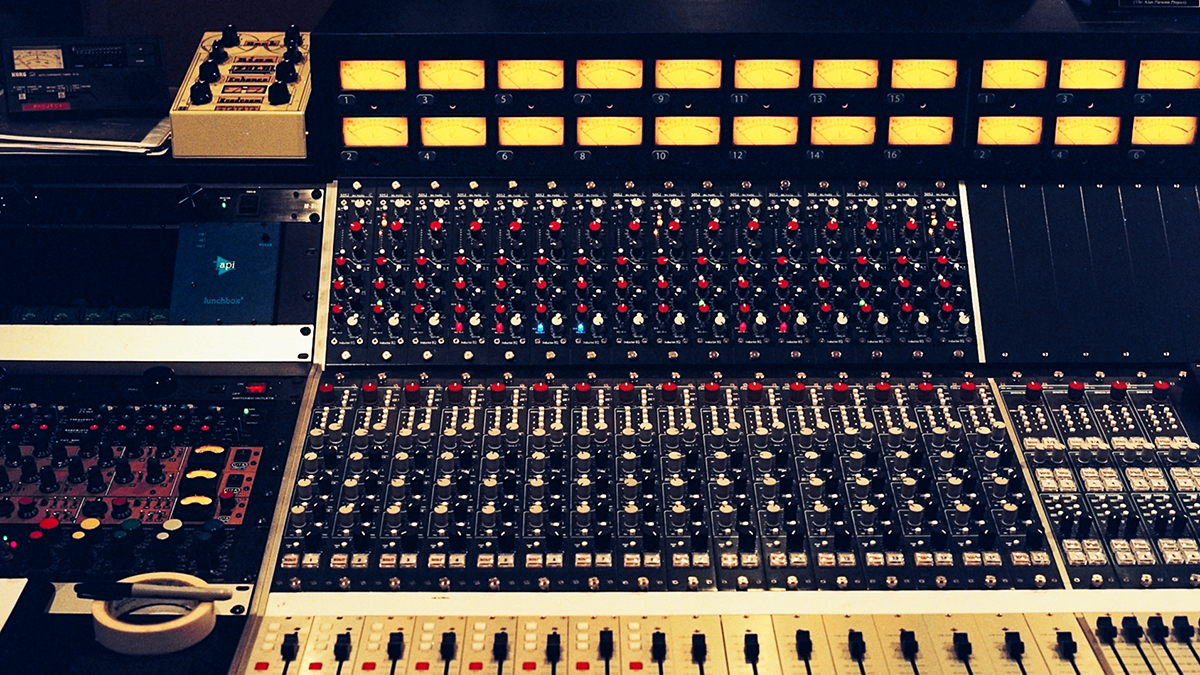“There was half a bass note that got chopped. That was my fault. Nobody noticed, though. I think I got away with it!”: Alan Parsons on engineering the side 2 medley on The Beatles’ Abbey Road
“Every day I walked up those famous Abbey Road steps and opened the door felt like I was stepping into a magic kingdom," he tells us. "There really is something very special about that building”

“I can’t remember exactly how long we were in Abbey Road for Dark Side of the Moon,” admits Alan Parsons, the man who, over 50 years ago, engineered one of the best-selling and influential albums of all time. “Probably a year and a half, something like that. Not constant! A week here, two weeks there, back in for a mammoth recording session, then off working with someone else.
“Pink Floyd were always pretty intense in the studio; there wasn’t a lot of sitting around. If we were in the studio, there was work to be done. The only time we downed tools was if there was an important football match or Monty Python on telly. Everything stopped for Python!”
Dark Side of the Moon is the album he always gets asked about, but Parsons’ time at Abbey Road Studio - he eventually became VP of EMI Studios Group - put him in the control room with everyone from the Beatles, Wings and Roy Harper to Al Stewart, The Hollies and glam popsters, Wizzard.
Then, of course, there was his own band, The Alan Parsons Project, whose 1978 album, Pyramid, gets the full-on box set treatment this month. Half-speed remastered vinyl, CDs, Blu-ray audio, 67 bonus tracks, a Dolby Atmos mix and a gorgeous 5.1 Surround Sound mix from the original multitrack master tapes by Parsons himself.
The Alan Parsons Project might not have been as successful as some of the bands he worked with, but albums like Pyramid, I, Robot and Eye in the Sky charted well in Europe and the US, with sales of over 50 million and a string of Grammy Nominations.
“For many years, the idea of being a ‘rock star’ never really appealed to me,” says Parsons, his trademark slightly wild hair and beard appearing over Zoom from his home near Santa Barbara. “Didn’t care about fame. Just wanted to be a backroom boy.
“Like most kids in the ‘60s, I loved music and listened to a lot of it. Big fan of the Beatles, loved the blues, the great singles by Phil Spector and Joe Meek. But, because of my dad [Denys Parsons, a scientist, film maker and talented musician], I was also introduced to classical. As well as hanging out at the blues and folk clubs in Soho - I saw some of the great orchestras and conductors. What fascinated me most was how this huge sound was being captured in the studio. How could you get all those people on that stage onto this piece of black plastic?”
Want all the hottest music and gear news, reviews, deals, features and more, direct to your inbox? Sign up here.
After talking his way into a job at the EMI headquarters in West London, Parsons then bagged a position as tape op at Abbey Road, eventually working with the Beatles on the Get Back/Let It Be sessions and the Abbey Road album.
“Being in the same room as music royalty like the Beatles, Sir Malcolm Sargent, Ken Scott, Geoff Emerick and George Martin... I never got used to that. Every day I walked up those famous Abbey Road steps and opened the door felt like I was stepping into a magic kingdom. There really is something very special about that building. Incredible things happen when you’re within those walls. I was up there just last year and I still got that shiver, that crackle of energy.”
A favourite Beatles moment?
“There were lots,” he laughs. “Seeing them at work. Seeing imagination being stretched to its limit. Putting together the medley of songs for the Abbey Road album is something I’ll never forget. This collection of incredible songs, blending into each other. A nightmare for an engineer, of course. Double- and triple-checking everything before you pressed a button, making sure you didn’t erase an important bit of guitar or drums.”
Anything you had to own up to?
“There was half a bass note that got chopped. That was my fault. Nobody noticed, though. I think I got away with it! I’m not going to name names, but I did once erase an entire piece of music that had to be re-recorded. It happened to everyone starting out in the studio. And probably still does. Difference is that you can now just click Undo.”’
I’m not going to name names, but I did once erase an entire piece of music that had to be re-recorded. Difference is that you can now just click Undo.
Although he has continued to work as a producer and engineer, Parsons’ musical ambitions did finally get the better of him in 1975, when he had the idea for a band.
“Well, it was a band of sorts,’ he explains. “Me, Eric Woolfson and some musicians we liked hanging out with. I’d worked with a lot of musicians in the studio and knew who I could trust. I was listening to a lot of Yes and liked the idea of this big sound on record. We very proudly told people we made Progressive Rock: lofty themes, strings, synths, using all the technology that was available.
“The problem was that most bands in the ‘70s toured. That was how you promoted the records you were releasing. Eric Woolfson hated the idea of being on the road. Jumping on to the bus and waking up in a new city every morning just wasn’t his thing. And then there was me. What would I do in a live band? OK, I was central to what we were doing in the studio, but as a live musician, I was... adequate. I didn’t think I was good enough to be up there on stage, doing a perfect take every night.
“Plus, you’ve got to remember that the technology was still evolving back then. Turning complex studio music into a live band wasn’t easy. So, we made the decision to keep it as a studio project.”
Parsons did eventually start touring in the 1990s. And he still tours today.
I know some musicians didn’t always embrace technology, but it was never a problem for me.
“I’ll be honest with you, that was a financial decision more than anything else. We were in dire financial straits and somebody suggested that we tour the Try Anything Once album [1994]. So, I picked up my acoustic guitar and relearned my three chords. I got on stage for the first time in Hamburg and had the biggest attack of nerves that I’ve ever experienced. But we got to the end of the first song and... everybody clapped. They cheered. Their faces looked happy. Wow! It was amazing. Yes, we do still tour and I occasionally take lead vocals; something I couldn’t have ever envisaged when the band first got together.”
Since that first Beatles session in the late-’60s, Parsons has witnessed an almost unbelievable shift in studio technology. From eight-tracks with countless bounce downs and often just one stereo pair for an entire orchestra to this era of Pro Tools, Logic and as many instruments and tracks as your CPU can cope with.
“In the early days, it was all about the number of tracks; from four to eight to sixteen and so on. Each leap made a huge difference. A difference in the quality of the sound and a difference to what a band could do in the studio. Sampling was another big change; the idea that you can have orchestral sounds in a box. Then MIDI and the DX7, Pro Tools, plugins. The arrival of CDs. I know some musicians didn’t always embrace technology, but it was never a problem for me.

“That’s not to say that I don’t appreciate ‘analogue-ness’. When I was working on the Pyramid box set, we made a digital copy of the old 2-inch multitrack tapes... and not much else. It wasn’t a digital makeover, just a case of rebalancing for the Dolby Atmos and 5.1 mixes. Yes, I admit that I did fix the odd duff note here and there, but I wanted to keep the vibe and the integrity of the original album.”
Are modern plugins as good as the real thing?
“I have a real piano in the studio, real guitars, we use real drums. But the UAD effects stuff is fantastic; some of my favourite reverbs and delays. And everything matched up with the music. You should have seen some of the Dark Side sessions. Five or six tape delays, cables running everywhere. Some tapes needing to be rewound, some had loops. Will they stay in time? Patchbay looking like Spaghetti Junction.
“It was 50 years ago,” he adds with a grin, “but I’m getting cold sweats just thinking about it.”
The Alan Parsons Project Pyramid deluxe box set and various formats will be available on 23 August via Cooking Vinyl.
Alan Parsons’ favourite 5 producers (in no particular order)
Sir Paul McCartney
“As well as the Beatles, we worked on some of the post-split albums. Being in the studio with him had a profound effect on me. In all the time I’ve known him, he’s never lost that desire to explore what music can do. Even if the drums sound great, he wants them to sound better. Always looking for the next step.”
Les Paul
“He invented multitrack... the idea of an overdub. Take what’s already been recorded and add to it. We wouldn’t have got far without him.”
Joe Meek
“Meek was making electronic music before electronic music had been invented. When you heard one of his singles on the radio, you knew straight away. Nothing else sounded like him. Never met him, but I gather he was an interesting character.”
Phil Spector
“Another producer whose records were instantly recognisable. And probably the first superstar producer... the guy who made so many of us want to know how to create that ‘sound’. I actually did have a go at creating the Spector Wall of Sound on a 1984 track called Don’t Answer Me. The whole band vamping at the end, everything smothered in echo. We even added sleigh bells!”
Sir George Martin
“What can you say? He was known as the Fifth Beatle. And justifiably so. Those records wouldn’t have sounded the same if he hadn’t been in the studio with them.”


